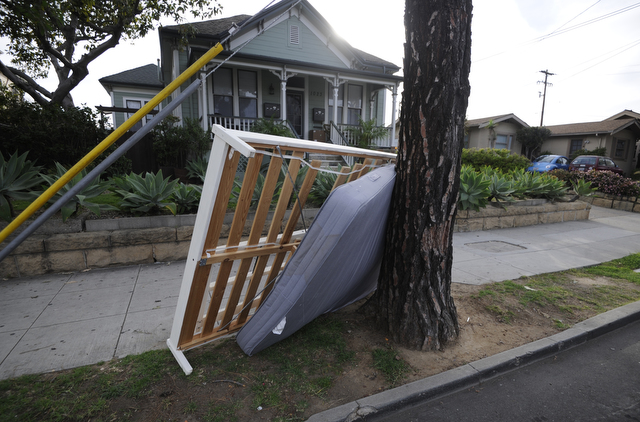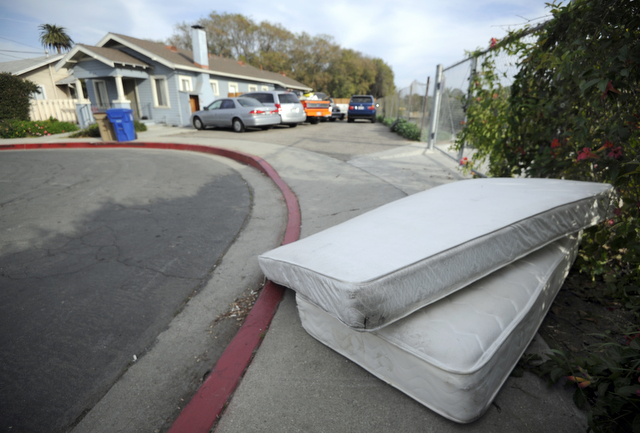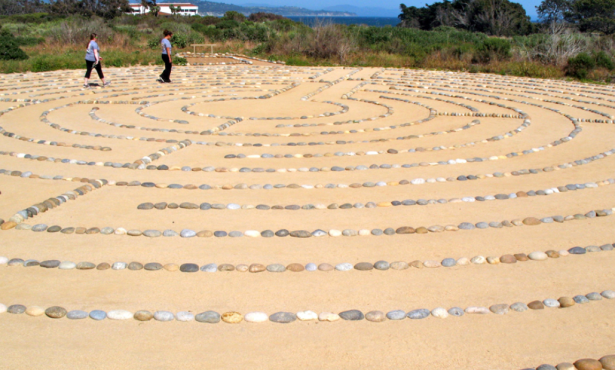Going to the Mattresses
New State Law Offers Relief from On-Street Dumping

In Santa Barbara’s most recent City Council race, the proliferation of abandoned mattresses dumped on neighborhood streets and sidewalks emerged as a hot new micro-issue. Offering a modicum of relief, a new state law went into effect January 1 requiring mattress manufacturers to underwrite the cost of mattress recycling.
Translated into practical realities for South Coast residents, MarBorg Industries is now collecting abandoned mattresses free of charge for residents dropping them and box springs off at its Quarantina Street facility. In addition, under MarBorg’s franchise agreement with City Hall, residential customers are entitled to two free pickups for bulky items. MarBorg is required to make up to 1,000 free pickups at the behest of City Hall to remove unsightly and blightly junk — mattresses, refrigerators, couches, TVs, and the like — dumped in the city’s public spaces. Since the beginning of the year, MarBorg’s Brian Borgatello estimated his company has picked up 2,500 abandoned mattresses.
Whether the new law is sufficient to allay concerns of neighborhood activists — primarily on the Westside — who are increasingly agitated about rogue dumping operations has yet to be seen. Susan Lafond with the recently formed Westside Community Group is lobbying City Hall to offer residents rebates up to $12 a mattress to encourage greater participation.
Under the new state law, $3 rebates are offered to anyone taking their mattresses “directly” to a drop-off center designated by the Mattress Recycling Council. With the nearest one located in San Luis Obispo, the chances of many Santa Barbarans making the trek with mattresses and box springs strapped to the roof of their car are pretty slim. Because the MarBorg drop-off center is not one of the designated centers, MarBorg is not required to offer any rebates.
Where rebates are concerned, Lafond argued, size definitely matters. In a test program, Alameda County offered mattress bounties ranging from $6-$12 — depending on size — and 543 were turned in. By contrast, the City of San Rafael offered $3 and got only one mattress returned in the same time period. Lafond is hoping City Hall can be induced to sweeten the pot, but given fiscal realities, that will be a steep climb.
According to research conducted by Westside resident Anne Anderson, the total number of complaints City Hall received jumped from 291 in the first quarter of 2014 to 540 in the third quarter of 2015. While the Eastside and Westside ran neck-and-neck for the largest number of calls, Anderson found most of the Eastside dumps took place in industrial neighborhoods while those on the Westside were predominantly residential.
In a tartly worded letter to other activists, Anderson expressed aggrieved curiosity why other city residents might find this acceptable. Do they think, she asked, “that we are all poor and would welcome their old mattresses and torn sofas?” Lafond, in a more recent letter to City Hall, lamented how it took “days to weeks at a time” to get the mattresses removed. “They are rained on and frequently urinated on by neighborhood dogs,” she stated.

About five years ago, the issue of mattress disposal achieved sufficient critical mass to become a political issue worthy of action in Sacramento. Abandoned mattresses were indicators of neighborhood blight, akin to the “broken window” theory of public safety. Mattress pickup and disposal evolved from mere nuisance to serious financial irritant as local governments found themselves shouldering the cost. For the state’s space-constrained landfill, mattresses pose serious problems. “They don’t compact,” explained Matt Fore, city of Santa Barbara’s trash specialist. “You can run ’em over with a D-9 tractor, and they stay the same.”
In Sacramento, State Senator (then an assemblymember) Loni Hancock, a liberal go-getter environmentalist from Oakland, introduced a bill that would require the mattress industry to provide cradle-to-grave accountability for their product. According to a study prepared by UCSB environmental scholars at that time, Californians bought 4.6 million new mattresses a year and disposed of 4.2 million. The study concluded that 85 percent of the carcasses could be cost-effectively recycled.
The mattress lobby found Hancock’s bill onerous and expensive and got Lou Correa, a crusty Democratic Party pol from Santa Ana, to carry a kinder, gentler bill more to the sleep industry’s liking. (Correa is now a member of Congress, but at the time he was a California state senator.) Behind the scenes, the two bills vied for legislative supremacy, but in 2013, Hancock and Correa decided to join forces and push a compromise measure that passed muster with both environmental activists and mattress manufacturers.
The bill tagged an $11 surcharge onto the price of every mattress sold in California, and that money would be used to fund the Mattress Recycling Council, which in turn would run statewide recycling operations. California and other states have had similar bills on the books for disposal of cans, bottles, paint, e-waste, and car batteries. But California’s Used Mattress Recovery and Recycling Act — which just went into effect this year after being passed in 2013 — is the first in the nation.



